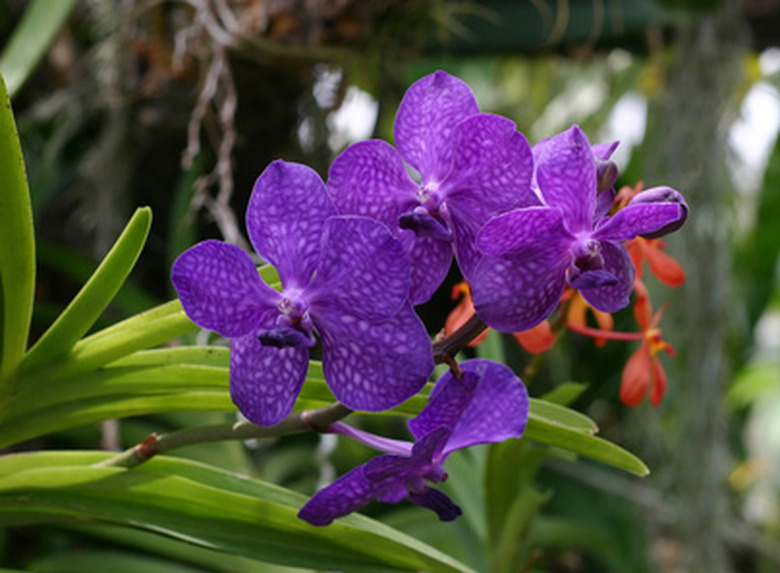Types Of Flowers Of The Philippines
The Philippines is a country endowed with exotic plant life. Its volcanic soil makes this Southeast Asian archipelago host to a great variety of native blooms that flourish. The Philippine islands experience a tropical climate with hot and humid weather all year, with regional variations–but for most of the country the two seasons are wet (May to October) and dry (November to April). Its tropical climate encourages the growth of beautiful and extraordinary flowers.
Sampaguita (Jasminum sambac)
Revered as the Philippines' national flower, sampaguita produces fragrant, white flowers often worn as garlands or leis for special occasions such as graduations or religious gatherings. Fans of celebrities offer these leis to their favorite actors and actresses to show their adulation. Catholics use sampaguita flowers to decorate a picture or statue of a saint, which explains the presence of sampaguita street vendors near Catholic churches.
- The Philippines is a country endowed with exotic plant life.
- The Philippine islands experience a tropical climate with hot and humid weather all year, with regional variations–but for most of the country the two seasons are wet (May to October) and dry (November to April).
The sampaguita grows near houses or along roadsides in many areas of the Philippines, but most prevalently in the provinces of Laguna and Pampanga. It is a spreading or sprawling shrub, usually less than 7 feet tall. Its leaves are glossy, ovate or rounded measuring 2.5 to 6 inches long, with short stalks, pointed or blunt tip and pointed or rounded base. Flowers are white, very fragrant and borne singly and in threes in axillary or terminal inflorescence. The sampaguita has eight to 10 very slender calyx teeth that are 5 to 8 millimeters long, a slender corolla tube that is 1 to 1.5 centimeters long and a limb that measures 1.5 to 2 centimeters in diameter.
Gumamela (Hibiscus rosa-sinensis)
Belonging to the family Malvaceae, gumamela (Hibiscus rosa-sinensis) is a common garden plant in the Philippines that produces large flowers, which measure about 4 inches in diameter. The flowers come in white, yellow, pink, red and thousands of color combinations, except true blue or black. Some smaller gumamela varieties have blossoms that are 2 inches in diameter and the flowers of other bigger varieties are 10 to 12 inches in diameter. The flowers come in single or double layers, depending on the variety.
- The sampaguita grows near houses or along roadsides in many areas of the Philippines, but most prevalently in the provinces of Laguna and Pampanga.
- The sampaguita has eight to 10 very slender calyx teeth that are 5 to 8 millimeters long, a slender corolla tube that is 1 to 1.5 centimeters long and a limb that measures 1.5 to 2 centimeters in diameter.
The gumamela's calyx is green and has several sepals. Gumamela grows up to 15 feet high and produces dark green leaves with jagged edges. Some gumamela bushes grow a foot in several years while others may grow to 15 feet if left undisturbed in the ground. Gumamela also grows in other parts of Asia and the Pacific islands. It is Hawaii's state flower and the national flower of Malaysia. The swamp hibiscus is its native Philippine species.
Orchids
Approximately 800 species of orchids grow in the Philippines, and are becoming susceptible to extinction due to loss of habitat and over-collection for commercial purposes. Orchids grow in low-lying lands and forests of all three of the major islands that comprise the Phililippine–Luzon, Visayas and Mindanao. Some orchids produce fragrant odors while others are odorless, and come in a variety of sizes and colors. The Conservation International, in cooperation with the Philippine government, is doing its part to prevent the total extinction of orchids by collecting and re-introducing indigenous orchids in selected protected areas of the Philippines, as well as growing endangered species in-vitro.
- The gumamela's calyx is green and has several sepals.
- Gumamela also grows in other parts of Asia and the Pacific islands.
